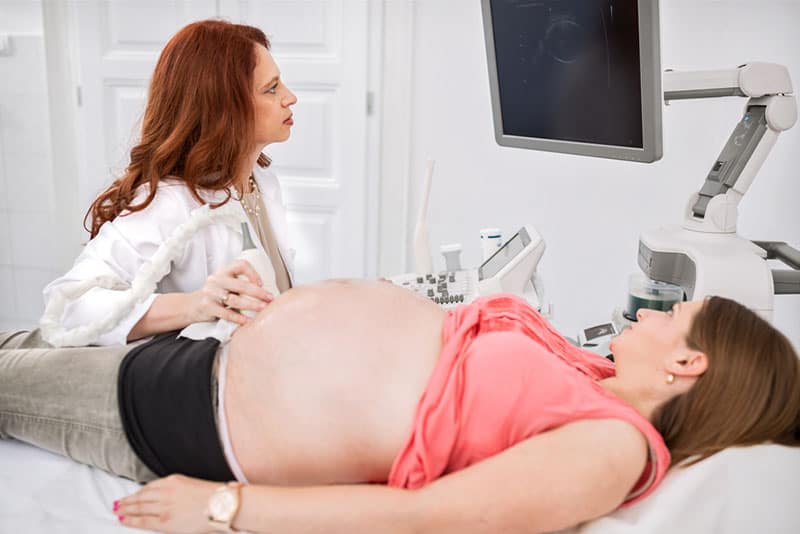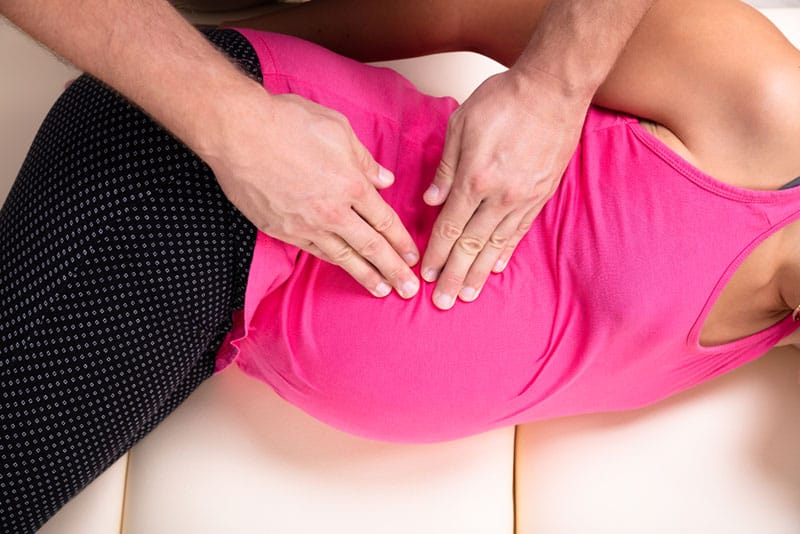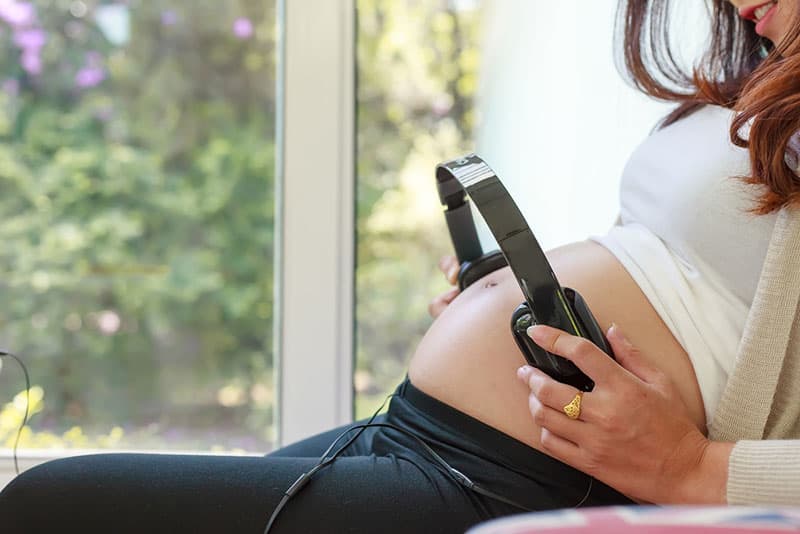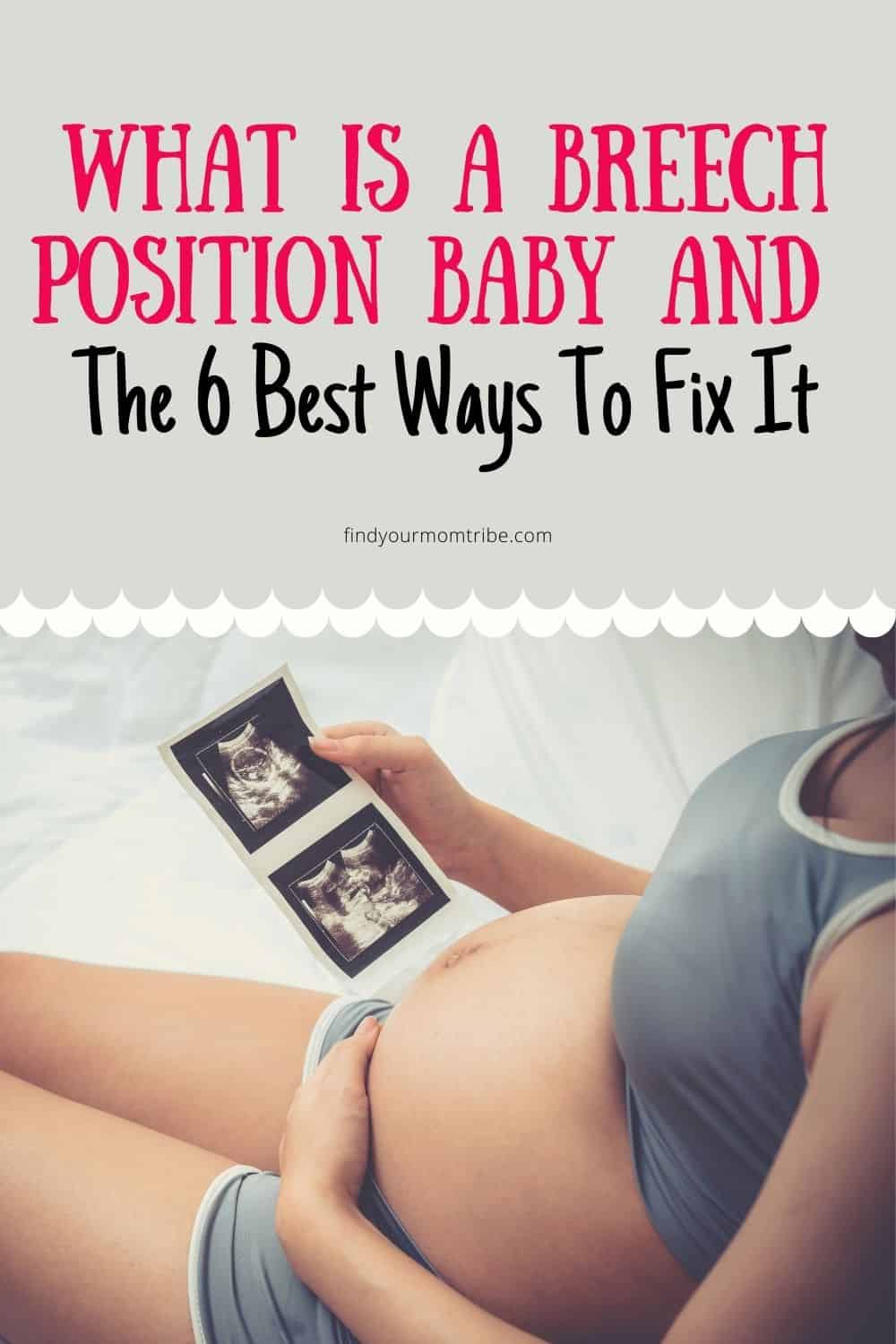A breech position baby is a rather uncommon occurrence during pregnancy and it might surprise you when it first happens, but what is it really?
Well, a breech position baby is a newborn who is turned the wrong way during the delivery and faces his feet and legs toward the birth canal rather than being in a head-down position.
This can complicate things during the birth of the baby.
A breech baby can happen in three different ways: a frank breech, a footling breech, or a complete breech and it usually occurs at the end of the third trimester, in the last few weeks of pregnancy (35th/36th and onward).
While having a breech position baby in the womb isn’t dangerous to the child itself during pregnancy, it becomes so when the pregnancy reaches its due date and it’s time to deliver the child.
That’s because, if the baby is in a breech position, there is a much higher risk of the baby getting stuck in the birth canal during a vaginal birth.
Or worse, the oxygen from the umbilical cord can be cut off and result in the baby being in distress. There are other risks that a vaginal breech birth poses for you as well if the baby’s head still isn’t facing the right way up.
Thankfully, in this modern age, a breech birth can be performed successfully through a variety of means and with reduced risk for both the mother and the baby.
Not to mention that there are several potential ways you can turn a breech position baby around while he’s still in the womb so you don’t have to go through with an alternative birthing method or surgical procedure.
Want to know more? Well then, let’s explore everything that having a breech position baby entails.
What Causes A Breech Position Baby To Begin With?

First and foremost, it’s important to know how breech presentations occur.
Once we’ve done this, we can figure out how to potentially remedy an abnormal baby’s position inside the womb and get a natural, vaginal delivery back on track.
There are a couple of potential reasons and the most common ones are:
• An overabundance of amniotic fluid or too little amniotic fluid
• The expecting mother having placenta previa
• If the expecting mother was pregnant before
• If the pregnancy involves twins, triplets, etc.
• If the pregnant mother has an abnormally shaped uterus or has fibroids
• If the pregnant mother has gone through a premature delivery in the past
That being said, as previously stated, having a case of a breech position baby is quite rare in most cases with only 3%-4% of all pregnancies resulting in it.
Although most future moms are unlikely to go through this, if you’re reading this, chances are you’re probably dealing with this problem already.
The most common cause is the imbalance of amniotic fluid inside the womb. This can typically be brought about because of gestational diabetes during your pregnancy or if you’ve had an infection during it.
But again, whatever the case, the breech position itself won’t cause problems for the child’s development further on down the line.
Ultimately, he is merely floating around in a fetal position in a bubble of liquid. The baby’s feet are down so he’s facing the birth canal bottom first instead of head first.
The 3 Possible Breech Baby Positions

As mentioned earlier, there are three types of breech position babies, all of them presenting with their bottom half facing the birth canal first.
These three positions are as follows:
• A frank breech: The baby’s behind is oriented toward the birthing canal and pointing at it. The most accurate description would be seeing your little one stuck in a perpetual falling motion.
• A footling breech: At least one of the legs is ahead of the baby’s behind and is pointing toward the birth canal. One or both feet are preparing to be first through the cervix when delivery comes.
• A complete breech: A mix of the two where the baby is in a fetal position but the rotation is off and both his feet and his behind are pointing down toward the birth canal.
The most common is a frank breech. Nobody is sure exactly why, but it’s the one noted down in most cases of breech pregnancies.
What Potential Issues Can Arise From A Breech Position Baby?

If the issue isn’t remedied, quite a large number of complications can occur with both the baby and the mother during the delivery process, some potentially fatal.
This is why it’s important to stay informed and know the full risks of deciding to go through with a vaginal breech delivery so you can potentially rethink it and opt for a safer method. Ultimately though, it’s your choice.
The most common complications are:
• Cord prolapse: A situation where the umbilical cord goes out before the baby and then gets stuck in the birth canal, between the fetus and the canal, cutting off blood flow to the baby and bringing about potentially lethal consequences.
• Birth asphyxia: A complication coming from the same issue as above. A compressed umbilical cord compromises the flow of oxygen to the baby potentially causing lethal consequences or major, lifelong complications for the child in question.
• Early membrane rupture: Otherwise known as a PROM, this is when your water breaks earlier than it should. If this happens, head to the hospital immediately. Your health care provider is likely to suggest staying in the hospital until you reach your due date or is going to suggest the option of inducing the birth to not risk a potential infection.
• Fetal head entrapment: A rather self-explanatory complication, one where the baby’s head fails to pass through the birth canal and gets trapped due to the breech position of the baby.
It’s imperative that the head gets out as soon as possible as lingering in the birth canal for too long can lead to intracranial hemorrhaging.
• Intracranial hemorrhaging: When the pressure from the pregnant woman’s pelvis begins applying too much pressure on the child’s head.
This causes internal bleeding, which, if not fatal, is likely to cause the child some complications. Some of these include cerebral palsy, minor brain damage, or epilepsy.
These are the risks that the baby faces, but what of the mother? Well, after having to go through the great effort of pushing a breech position baby through, you may also have to deal with your child getting stuck which means you’re going to have to deal with unusual delivery procedures.
A very common one is having to cut into the perineum (the area between the anus and the cervix). Cutting into it serves to increase the success rate of the delivery at the risk of you suffering an infection and a longer healing process.
That said, it’s still not ideal to risk your child’s safety just because you might be a firm believer that vaginal delivery is the only natural one.
Believe me, getting a C-section is just as natural but with much less risk for your little angel.
Naturally, it’s best to listen to what your obstetrician or a qualified doctor has to say about the gravity of your breech position and if it will even pose an issue.
Who knows, you might be suffering from one of the milder types of breech baby positions, ones that are easily fixable through simple methods.
Adjusting A Breech Position Baby Back To A Natural Orientation
If you happen to have a breech position baby, know that there’s still time to turn the child around. There are a variety of different methods that can be used that won’t put your pregnancy at much risk (if at all).
So, if you’re not a fan of a cesarean delivery, you might still have a chance to avoid it should any of the methods below prove effective:
1. An external cephalic version (ECV)

This one might sound a little weird, but the first method on our list is one where the doctor helps the baby turn back to the proper position by using his own hands.
This is done directly over the abdomen with no surgical procedure necessary.
Firstly, you’re given medication to soothe and calm your uterus down to avoid any potential complications and then the doctor helps adjust the baby’s position by feeling the child over the abdomen.
However, if you have an abnormally-shaped uterus, this method may not be possible for you.
A doctor can’t perform an ECV with utmost confidence if he’s dealing with a uterine shape he’s not familiar with and you might have to resort to a caesarean section after all.
2. Using essential oils

While a rather odd method to try, some mothers have claimed that using essential oils typically used to stimulate abdominal functions has helped stimulate the child inside to shift back to the right position on his own.
That said, while the method is completely safe to try, it doesn’t have guaranteed success and you must make sure you’re using the right essential oils.
Some of them can be dangerous to use during pregnancy and will just increase the risk of a complication instead.
Always double-check with your doctor or obstetrics professional.
3. Utilizing acupuncture and moxibustion

A variety of alternative medicine practices have claimed to provide relief to many pregnant women during their second and third trimesters and, through proper use have supposedly assisted in getting their babies back to the correct position.
Acupuncture and moxibustion are mostly risk-free and there’ll be no harm in trying it out. Should it work out for you, then perfect – if not, you’re in no more danger than you were before.
Although I’d still stick to medical advice from an obstetrics and gynecology professional (ob-gyn) first, that’s just me.
You’re free to make your own choices and it’s always important to do what’s best for you and your little one
4. Using inversion

Another method that can potentially get results is to try and invert the baby yourself through safe positioning.
When you discover that you have a breech position baby, you can attempt to elevate your pelvis in a variety of different ways.
Some of the most popular ones include lying down on a slanted surface like a set of stairs while being properly supervised, doing a ‘handstand’ in a swimming pool, or simply putting pillows under your hips to prop them up and elevate your uterus to help the baby flip back.
5. The Chiropractic (Webster) technique

In this method, a chiropractor helps to realign your pelvis and check for any ligaments that are not aligned with the other side.
Helping realign your ligaments so that they are symmetrical should increase the chances of your little one turning around and you might just get out of having a cesarean birth.
Do make sure that you’re okay to go through with this as some of these moves can be quite uncomfortable and if they bother you in any way, don’t force them for the sake of skipping a C-section.
6. Music

And finally, potentially the oddest one on the list, is the use of music. We all know how people claim that music has the power to heal wounds.
Well, in this case, some people claim that it has the power to make your baby move.
By playing some music and directing the output toward the belly bump, it is said to get a reaction out of the baby which then results in him turning himself to a different (hopefully upright) position.
While most likely a myth, it still doesn’t hurt to try and it won’t cost a cent to do so!
Sometimes though, no matter how hard you try, it might end up being impossible to turn the baby back to a more natural position in which case you ought to ask advice from your ob-gyn or your midwife about what to do next.
It’s very likely that they’re going to suggest a C-section which is a perfectly normal procedure and the go-to option if all others have been exhausted.
Heed their advice, but, in the end, also remember, it’s your body and your choice.
In Conclusion
A breech position baby is usually nothing too worrisome at the start nor should it be a problem for pregnant women who aren’t opposed to having a C-section, but might pose an issue for mammas who are.
That said, there’s still time to reverse the problem by attempting a few different methods, most of which are safe, and hopefully, the baby does the work all on his own.
A breech presentation of a baby only happens when you’re near the end of your full-term of pregnancy.
So, if you’re only at the start of your journey now and researching all the things that can happen, you still have time.
If it doesn’t end up working, I strongly suggest shifting your birth plan to the one that your doctor, ob-gyn, or any other certified health care provider suggests as that one will pose the least amount of risk for both you and the baby.
If it ends up being a C-section, so be it. The worst thing that will happen is that you’ll have to spend a few weeks recovering from the scar, but the rest of it is going to turn out okay and you’re going to have a healthy baby.
It beats having to risk potential complications and putting the baby in distress. Regardless of what happens, I trust that you’ll make the right decision, mamma.
READ NEXT:
Like this post? Please share or pin it for later. You can also stay in the loop and follow us on Facebook, Instagram or Pinterest.

This post contains affiliate links. Please see our full disclosure for more info.

